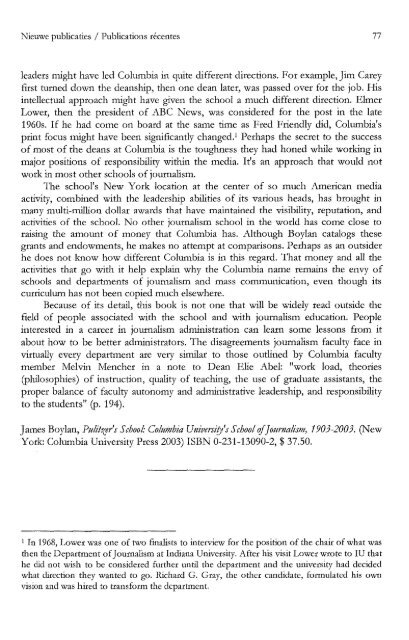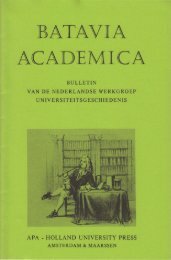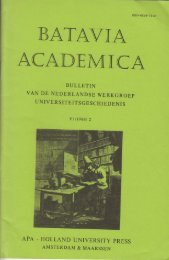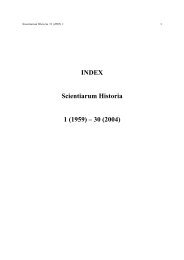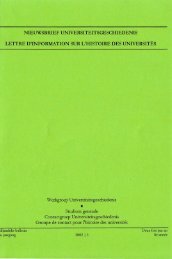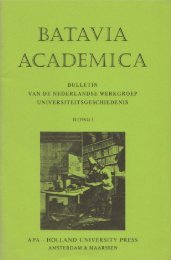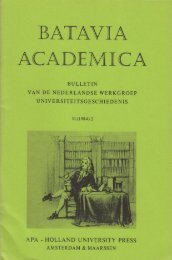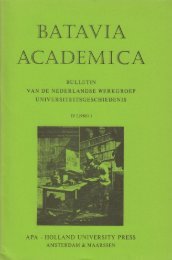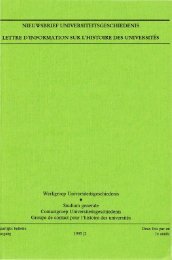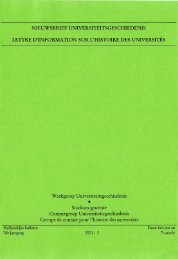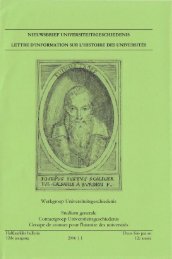Jaargang / Année 10, 2004, nr. 2 - Gewina
Jaargang / Année 10, 2004, nr. 2 - Gewina
Jaargang / Année 10, 2004, nr. 2 - Gewina
Create successful ePaper yourself
Turn your PDF publications into a flip-book with our unique Google optimized e-Paper software.
Nieuwe publicaties I Publications recentes 77<br />
leaders might have led Columbia in quite different directions. For example, Jim Carey<br />
first turned down the deanship, then one dean later, was passed over for the job. His<br />
intellectual approach might have given the school a much different direction. Elmer<br />
Lower, then the president of ABC News, was considered for the post in the late<br />
1960s. If he had come on board at the same time as Fred Friendly did, Columbia's<br />
print focus might have been significantly changed.l Perhaps the secret to the success<br />
of most of the deans at Columbia is the toughness they had honed while working in<br />
major positions of responsibility within the media. It's an approach that would not<br />
work in most other schools of journalism.<br />
The school's New York location at the center of so much American media<br />
activity, combined with the leadership abilities of its various heads, has brought in<br />
many multi-million dollar awards that have maintained the visibility, reputation, and<br />
activities of the school. No other journalism school in the world has come close to<br />
raising the amount of money that Columbia has. Although Boylan catalogs these<br />
grants and endowments, he makes no attempt at comparisons. Perhaps as an outsider<br />
he does not know how different Columbia is in this regard. That money and all the<br />
activities that go with it help explain why the Columbia name remains the envy of<br />
schools and departments of journalism and mass communication, even though its<br />
curriculum has not been copied much elsewhere.<br />
Because of its detail, this book is not one that will be widely read outside the<br />
field of people associated with the school and with journalism education. People<br />
interested in a career in journalism administration can learn some lessons from it<br />
about how to be better administrators. The disagreements journalism faculty face in<br />
virtually every department are very similar to those outlined by Columbia faculty<br />
member Melvin Mencher in a note to Dean Elie Abel: "work load, theories<br />
(philosophies) of instruction, quality of teaching, the use of graduate assistants, the<br />
proper balance of faculty autonomy and administrative leadership, and responsibility<br />
to the students" (p. 194).<br />
James Boylan, Pulitzer's SchooL· Columbia Universiry's School rif Journalism, 1903-2003. (New<br />
York: Columbia University Press 2003) ISBN 0-231-13090-2, $ 37.50.<br />
1 In 1968, Lower was one of two fmalists to interview for the position of the chair of what was<br />
then the Department of Journalism at Indiana University. After his visit Lower wrote to IU that<br />
he did not wish to be considered further until the department and the university had decided<br />
what direction they wanted to go. Richard G. Gray, the other candidate, formulated his own<br />
vision and was hired to transform the department.


